Related Research Articles

Toshiro Mifune was a Japanese actor and producer. A winner of numerous awards and accolades over a lengthy career, Mifune is best known for starring in Akira Kurosawa's critically acclaimed jidaigeki films such as Rashomon (1950), Seven Samurai (1954), Throne of Blood (1957), The Hidden Fortress (1958) and Yojimbo (1961). He also portrayed Miyamoto Musashi in Hiroshi Inagaki's Samurai Trilogy (1954–1956), Lord Toranaga in the NBC television miniseries Shōgun, and Admiral Isoroku Yamamoto in three different films. He is widely considered one of the greatest actors of all time.

Takashi Shimura was a Japanese actor who appeared in over 200 films between 1934 and 1981. He appeared in 21 of Akira Kurosawa's 30 films, including as a lead actor in Drunken Angel (1948), Rashomon (1950), Ikiru (1952) and Seven Samurai (1954). He played Professor Kyohei Yamane in Ishirō Honda's original Godzilla (1954) and its first sequel, Godzilla Raids Again (1955). For his contributions to the arts, the Japanese government decorated Shimura with the Medal with Purple Ribbon in 1974 and the Order of the Rising Sun, 4th Class, Gold Rays with Rosette in 1980.

Yojimbo is a 1961 Japanese samurai film directed by Akira Kurosawa, who also co-wrote the screenplay and was one of the producers. The film stars Toshiro Mifune, Tatsuya Nakadai, Yoko Tsukasa, Isuzu Yamada, Daisuke Katō, Takashi Shimura, Kamatari Fujiwara, and Atsushi Watanabe. In the film, a rōnin arrives in a small town where competing crime lords fight for supremacy. The two bosses each try to hire the newcomer as a bodyguard.

Stray Dog is a 1949 Japanese film noir crime drama directed and co-written by Akira Kurosawa and starring Toshiro Mifune and Takashi Shimura. It was Kurosawa's second film of 1949 produced by the Film Art Association and released by Shintoho. It is also considered a detective movie that explores the mood of Japan during its painful postwar recovery. The film is also considered a precursor to the contemporary police procedural and buddy cop film genres, based on its premise of pairing two cops with different personalities and motivations together on a difficult case.

The Quiet Duel is a 1949 Japanese film directed by Akira Kurosawa.
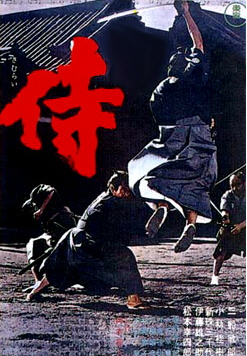
Samurai Assassin is a 1965 Japanese film directed by Kihachi Okamoto and starring Toshiro Mifune, Koshiro Matsumoto, Yūnosuke Itō, and Michiyo Aratama. It is set in 1860, immediately before the Meiji Restoration changed Japanese society forever by doing away with the castes in society and reducing the position of the samurai class.
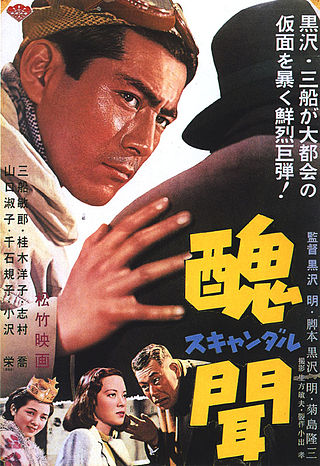
Scandal is a 1950 Japanese film written and directed by Akira Kurosawa. The film stars Toshirō Mifune, Takashi Shimura and Shirley Yamaguchi.
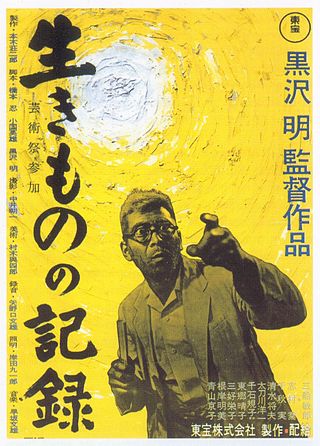
I Live in Fear is a 1955 Japanese drama film directed by Akira Kurosawa, produced by Sōjirō Motoki, and co-written by Kurosawa, Shinobu Hashimoto, and Hideo Oguni. The film is about an elderly Japanese factory owner so terrified of the prospect of a nuclear attack that he becomes determined to move his entire extended family to what he imagines is the safety of a farm in Brazil.

Duel at Ichijoji Temple is a 1955 Japanese film directed by Hiroshi Inagaki starring Toshiro Mifune. Shot in Eastmancolor, it is the second film of Inagaki's Samurai Trilogy.

Samurai III: Duel at Ganryu Island is a 1956 Japanese film directed by Hiroshi Inagaki and starring Toshirō Mifune. Shot in Eastmancolor, it is the third and final film of Inagaki's Samurai Trilogy.

Araki Mataemon was a Japanese samurai active in the early Edo period. Araki Mataemon was the founder of the koryū martial art Yagyū Shingan-ryū, known sometimes as Yagyū Shingan-ryū Taijutsu.

Zatoichi Meets Yojimbo (座頭市と用心棒) is a 1970 Japanese drama film directed by Kihachi Okamoto.

Samurai Banners is a Japanese samurai drama film released in 1969. It was directed by Hiroshi Inagaki and is based on the novel Furin kazan by Yasushi Inoue.
Daichūshingura (大忠臣蔵) is a Japanese television dramatization of the events of the Forty-seven Ronin. The first episode aired on January 5, 1971, and the 52nd and final episode appeared on December 28 of the same year. The NET network broadcast it in the Tuesday evening 9:00–9:56 prime-time slot in Japan.

The Sands of Kurobe is a 1968 Japanese drama film directed by Kei Kumai. It is an adaptation of the novel The Sun of Kurobe that dramatizes the construction of the Kurobe Dam. It was Japan's submission to the 41st Academy Awards for the Academy Award for Best Foreign Language Film, but was not accepted as a nominee. Produced by its stars Toshiro Mifune and Yujiro Ishihara, the film's first run in cinemas lasted for a month, significantly longer than the week or ten days that films at that time usually ran in Japan.

Snow Trail is a 1947 black-and-white Japanese film directed by Senkichi Taniguchi from Akira Kurosawa's screenplay. It was the first film role for Toshirō Mifune, later to become one of Japan's most famous actors. Mifune and the other main actor in the film, Takashi Shimura, later became long-term collaborators of film director Akira Kurosawa.
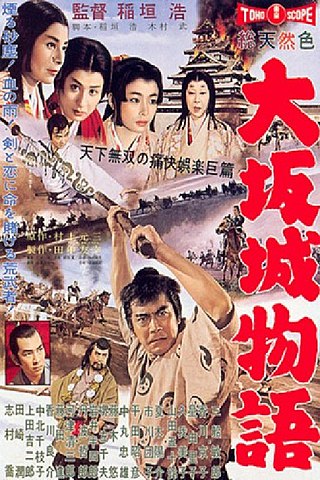
The Story of Osaka Castle is a 1961 Japanese drama film directed by Hiroshi Inagaki, with special effects by Eiji Tsuburaya. The film is based on historical events taking place in Japan during the beginning of the 17th century.
Nobuo Kawai was a Japanese actor. He is most famous for playing villains and appeared in many jidaigeki and detective television dramas as a guest. He was a member of Yukio Mishima's Roman Gekijo Theatre Company.
Haru no Sakamichi (春の坂道) is a 1971 Japanese television series. It is the ninth NHK taiga drama.
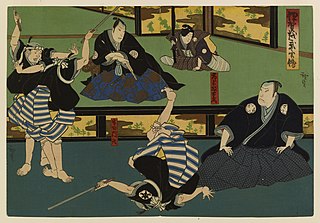
The Igagoe vendetta was a vengeance incident in Japan in 1634, where the murder of a retainer was avenged by his older brother. The event happened in the town of Iga-Ueno near Iga Pass. The vendetta is known as one of the three major vendetta incidents in Japan, alongside the Revenge of the Soga Brothers and the Akō vendetta.